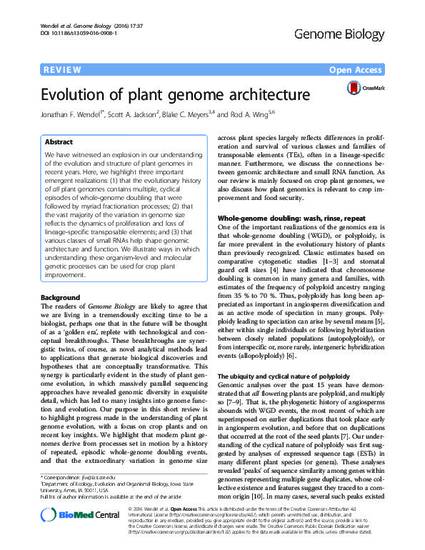
Article
Evolution of plant genome architecture
Genome Biology
Document Type
Article
Disciplines
Publication Version
Published Version
Publication Date
1-1-2016
DOI
10.1186/s13059-016-0908-1
Abstract
We have witnessed an explosion in our understanding of the evolution and structure of plant genomes in recent years. Here, we highlight three important emergent realizations: (1) that the evolutionary history of all plant genomes contains multiple, cyclical episodes of whole-genome doubling that were followed by myriad fractionation processes; (2) that the vast majority of the variation in genome size reflects the dynamics of proliferation and loss of lineage-specific transposable elements; and (3) that various classes of small RNAs help shape genomic architecture and function. We illustrate ways in which understanding these organism-level and molecular genetic processes can be used for crop plant improvement.
Creative Commons License
Creative Commons Attribution 4.0 International
Copyright Owner
BMC
Copyright Date
2016
Language
en
File Format
application/pdf
Citation Information
Jonathan F. Wendel, Scott A Jackson, Blake C Meyers and Rod A Wing. "Evolution of plant genome architecture" Genome Biology Vol. 17 Iss. 1 (2016) p. 37 Available at: http://works.bepress.com/jonathan_wendel/67/

This article is published as Wendel, Jonathan F., Scott A. Jackson, Blake C. Meyers, and Rod A. Wing. "Evolution of plant genome architecture." Genome biology 17, no. 1 (2016): 37. 10.1186/s13059-016-0908-1. Posted with permission.